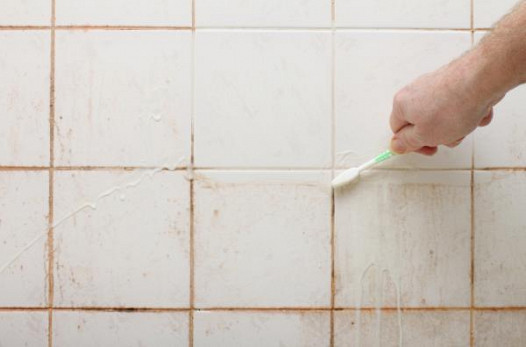Ways to Repair a Water-Damaged Wall in the Bathroom
Ways to Repair a Water-Damaged Wall in the Bathroom
Blog Article
The article author is making several good points on Common Causes of Water Damage in a Bathroom in general in this article in the next paragraphs.

The shower room is very prone for damp accumulation and also possible water damages as a result of the constant use water in it. This post provides easy evaluation techniques to help detecting water damages risks.
The frequent use of water in the bathroom makes it exceptionally at risk for damp build-up and potential water damages. By evaluating it on a regular basis, you can minimize water associated damages.
The complying with set of inspections is very easy to do and should be done as soon as in every 3 months in order to keep your bathroom healthy as well as to prevent potential water problems caused by the bath tub, the shower, pipe joints and plumbing, sinks, closets, as well as the toilet
Do not forget doing these evaluations and be detailed while doing them. Keep in mind that these straightforward assessments can save you a great deal of cash by supplying early indicators for water damage
Sinks as well as Cabinets
Sinks and also cupboards are revealed to wetness and also humidity day-to-day and are commonly neglected. Evaluate routinely under the sink and also on the countertop over it. Fix any drip in the catch as it may suggest drainpipe problems. Browse the sink, slow draining pipes might indicate a blocked drainpipe. Replace sink seals if they are split or loosened.
Bathtub as well as Shower
The shower and also bathtub need unique attention as well as upkeep. Examine the tiles as well as change if broken. See to it that there is no missing cement between the ceramic tiles. Evaluate and change cracked caulking at joints where the walls fulfill the flooring or the tub. Obstructed drains pipes and pipelines problems will certainly stop the bathtub from drying out and might indicate significant issues underneath the bathtub. Seek advice from an expert immediately to avoid structural damages. Pay attention to stainings or soft areas around the tub walls as they may show an internal leakage.
Plumbing
Signs for water damages are hard to discover since most pipelines are mounted inside the walls.
Pay special focus to flooring as well as wall surfaces moisture and also stains as they may show an invisible plumbing issue. Inspect dampness levels in adjoining spaces too.
The Toilet
The bathroom is a prone water joint. Examine the water lines and search for leaks around the bathroom seat, in the tube, and under the water storage tank. If you find any kind of signs of moisture on the floor around the bathroom, look for leakages in the toilet rim and also tank seals.
Realize that hanging toilet bowl deodorants boosts the opportunities for obstructions.
Water Damage Signs In The Bathroom To Avoid Cleanup
Musty smell
This is one of the easiest signs to catch because musty smells are so odorous. The damp, earthy, moldy smell should be a big red flag. The smell will develop when moisture gets trapped in surfaces, and begins to facilitate mold growth. Leaking pipes under cabinets, inside walls, and behind shower fixtures will cause moisture to stay trapped and not dry, which will lead to mold growth and spread. As soon as you notice any musty smells in your bathroom, have it checked for hidden water damage and cleanup signs.
Visible mold
If the smell isn’t there to give it away, sometimes you will actually see mold growth. Finding mold in your bathroom is a serious problem, because mold is very harmful to your health. By the time mold growth is visible, it also means that water damage has already occurred and been present for some time. The only way the mold problem can be resolved is to find the source of the moisture and get it stopped. To safely and adequately remove mold, you need to have professionals handle the remediation. Do not waste any time in getting mold problems addressed, fixed, and sanitized so that you can protect you and your family from the many respiratory symptoms caused by mold exposure.
Damaged floors
Bathroom floors should be able to withstand some exposure to water while still remaining in good condition. However, when excess exposure or water leaks occur, they will begin to damage even the most water-resistant flooring. If you notice any cracking, bubbling, staining, or warping on your bathroom floors, there is probably a water leak somewhere causing the distortion. If you notice areas of the floor have become softer, or even have a spongy feeling, there is probably damage to the subfloor. Subflooring is typically made up of plywood. When plywood is exposed to water or moisture, it will absorb it. Once it has become saturated, the weight of the excess water will cause the wood to swell and soften. Check the floors in your bathroom frequently to catch any of these sings before they lead to damaged subflooring.
Changes on walls
When water leaks behind walls, it will cause changes in the drywall. Peeling plaster, blistering paint, and soggy wallpaper are all good indicators that excess water is building up behind the wall. Water leaking behind drywall will cause it to swell and be soft to the tough. If you start to notice gaps along the trim of your walls, or where tile meets the wall, it could also be a strong indicator that there is a leak behind the wall. Any changes, distortion, or damage on the walls should be evaluated as soon as you notice it to prevent further water damage and cleanup.

I ran across that entry on Preventing Water Damage in the Bathroom while perusing the internet. Liked our piece? Please share it. Help other people locate it. Kudos for your time. Visit us again soon.
Quote Report this page